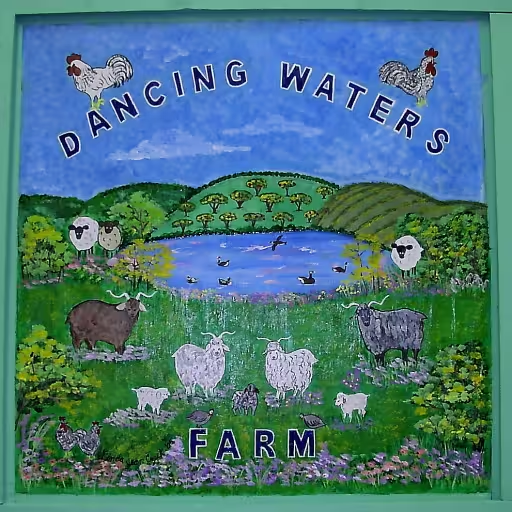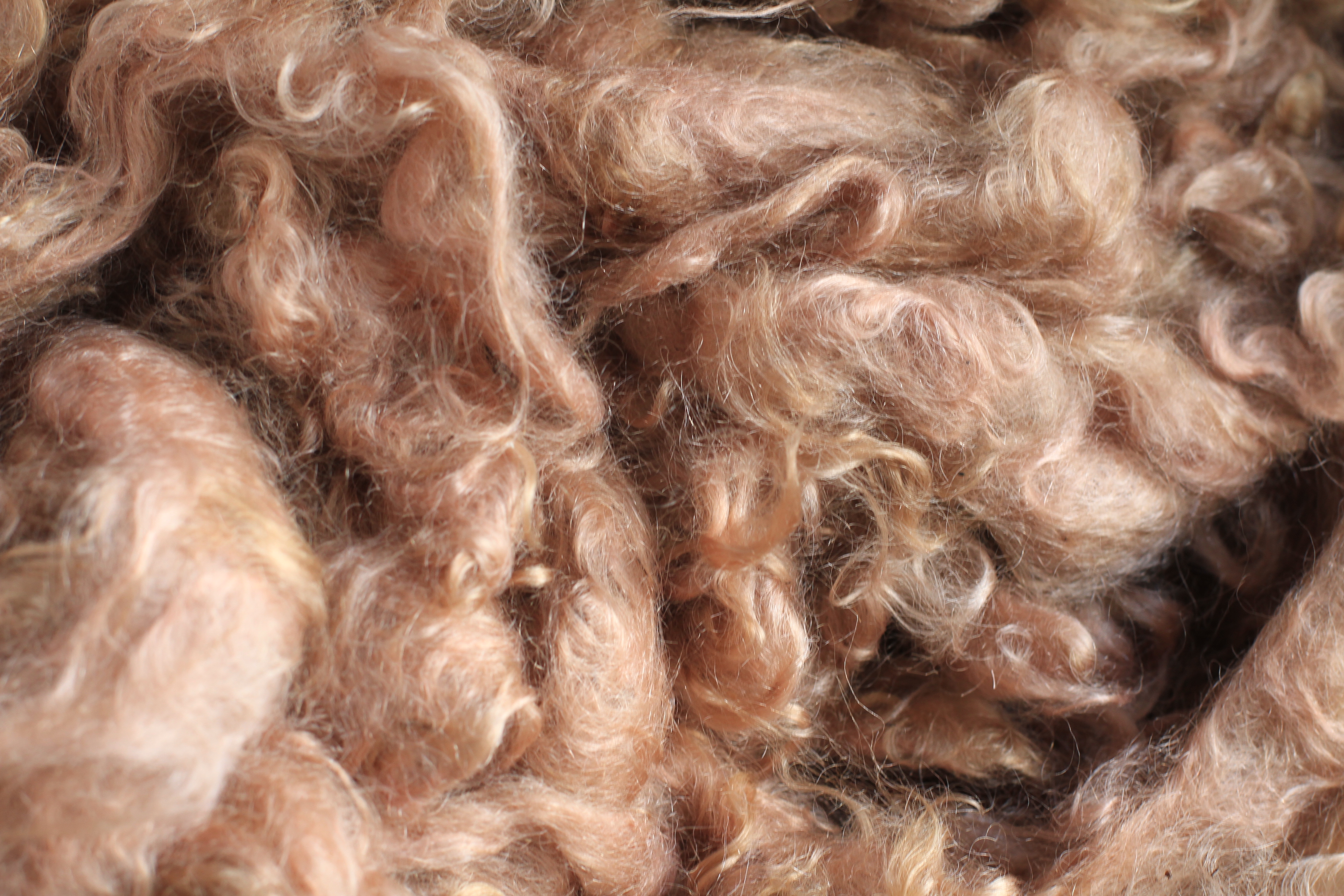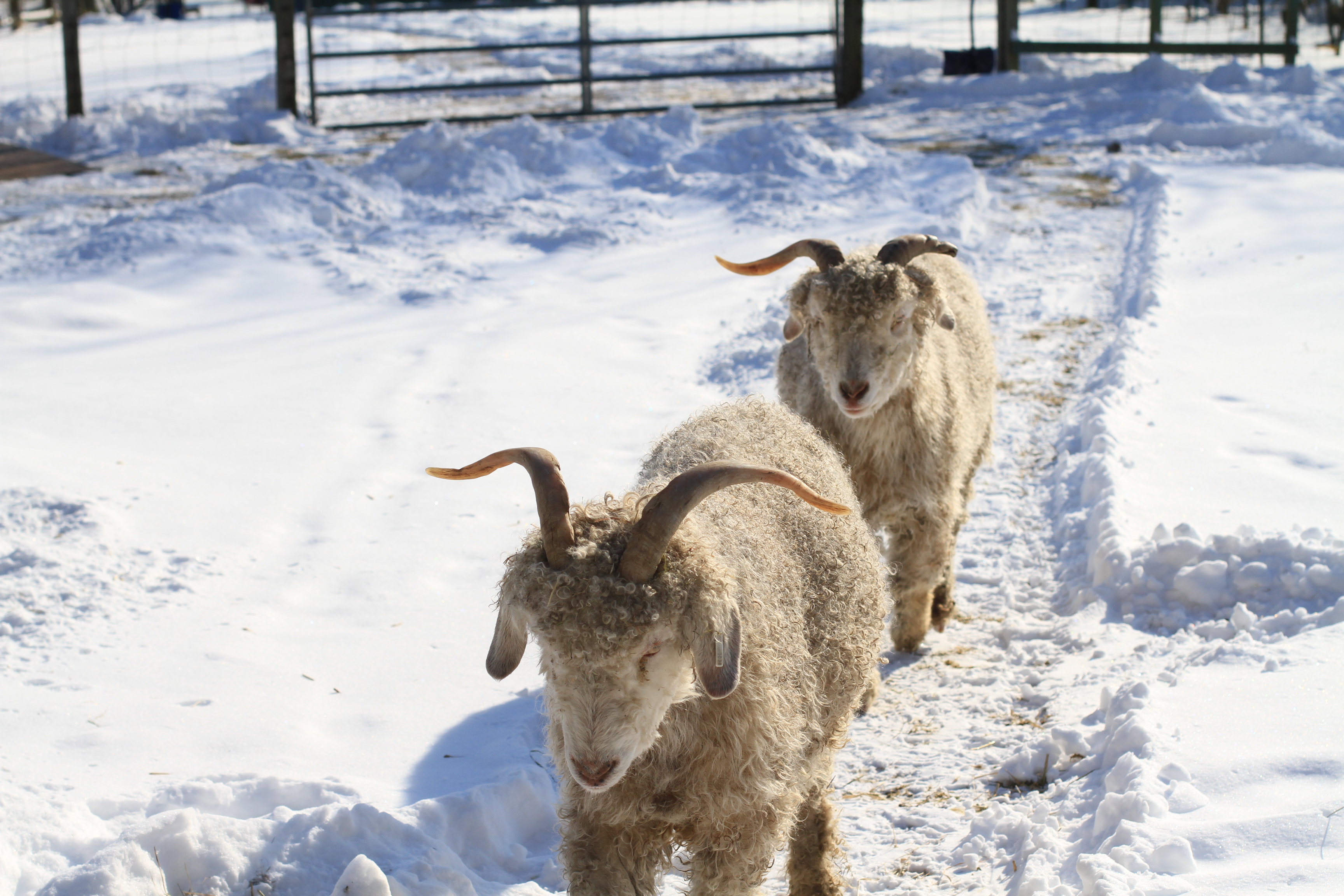After 9 hours of snow shoveling I’m ready to sit at the computer and rest!
In between snowstorms I boiled a big batch of black walnuts I collected in the yard during the Fall. After collecting the nuts the outer shell has to be removed as that is the only part used for dying. I use a hammer to crack the outer shell, then peel the shell away and dump then into a pillow case and tie it closed. Next I fill a big pot holding the pillow case full of walnut shells with water and boil for about an hour to make the walnut liquor used for dying. Since the walnut shells are in a pillow case, the walnut shells are self filtered, I just have to pull the pillow case out of the pot for a clean, filtered walnut liquor. I then boiled the filtered walnut liquor with about 2 pounds of mohair locks for another hour, then washed them in an old washer. Washing wool or mohair is really just a series of rinses since you can’t agitate the fiber – unless you want felt!
So if you add up the time to dye 2 pounds of mohair it is at least 3 hours (~an hour to collect the walnuts, another to crack them, starting the fire, filling the pots, pouring the liquor off and starting a new pot about 30 minutes, and another 30 minutes for washing – most of the time is not continuous, but requires constant checking to see how things are going). 2 pounds of mohair is about all that fits in a big 16 quart pot, so it’s the largest batch I can reasonably do. Wool has a much greater volume for the same weight as mohair so much less wool will fit in the same sized pot as mohair. A lot of labor for such a small amount of fiber!
I love dying with walnuts because I have lots of black walnut trees so the out of pocket is cost is excellent (free!) and it requires only one step (boiling to extract the dye) and no mordant (pretreating with another chemical to ensure permanence of the dye) is required as is the case for most “natural” dyes.
Black Walnut Dyed Mohair Locks
I often have customers ask me if I dye with natural or chemical dyes. How to answer? All dyes, even those derived from natural sources (vs commercially produced industrial chemical dyestuffs) are still chemicals, and there is no way to dye without using a chemical. Dying is the chemical process of fiber reacting with a chemical (or mix) to alter it’s observed color. And naturally derived chemicals are not necessarily safer than commercially produced chemicals either. Many natural dyes require mordanting (pretreating) with chromium which is very toxic. Alum can be used as a mordant and it is much safer but it also produces a different effect on the final color than chromium. Even with black walnuts which can be used without a mordant, it is well known that black walnuts contain a chemical that suppresses plant growth. Thus walnuts have a toxic effect on other plants. Evolutionarily it improves the odds of the walnut growing into a great tree, but at the expense of other plants that might be trying to grow in the same general area. I heartily agree with philosophy of minimizing impacts to the environment, but which path to choose is not always a straight forward nor clear decision.
Related is the broader concept of ‘nature’, which can be beautiful and soul filling but is also quite brutal and does not think nor care what is destroyed vs saved. Many people are so far removed from nature that they do not realize how thin an edge life walks and how little impact people have in the short run. I am reminded of this constantly as it is so difficult to keep my animals safe and in good health. It is so hard to survive in nature that I find it amazing that any wildlife exists as sadly I lose animals despite continuous intervention.
Jessie and James


